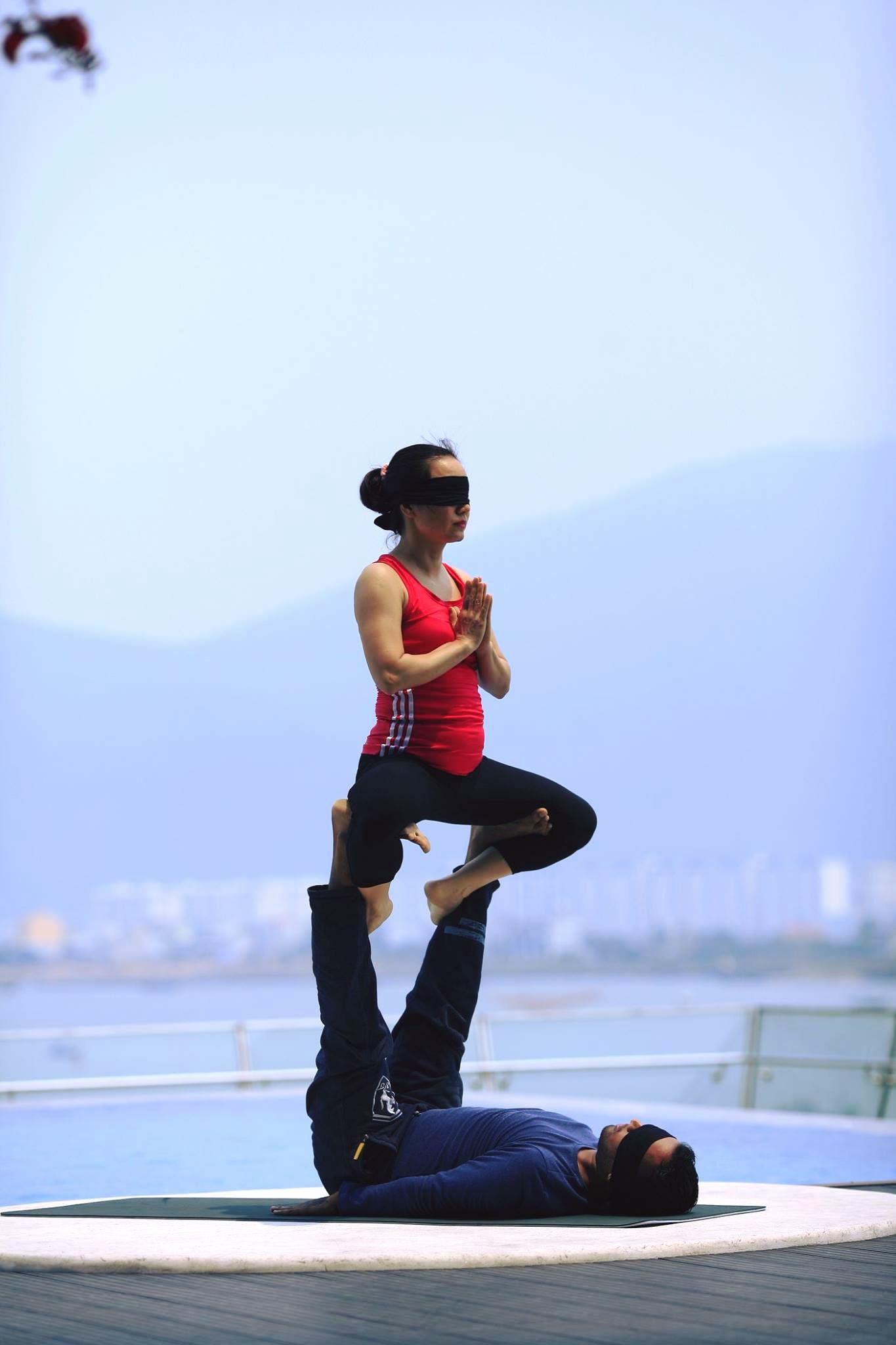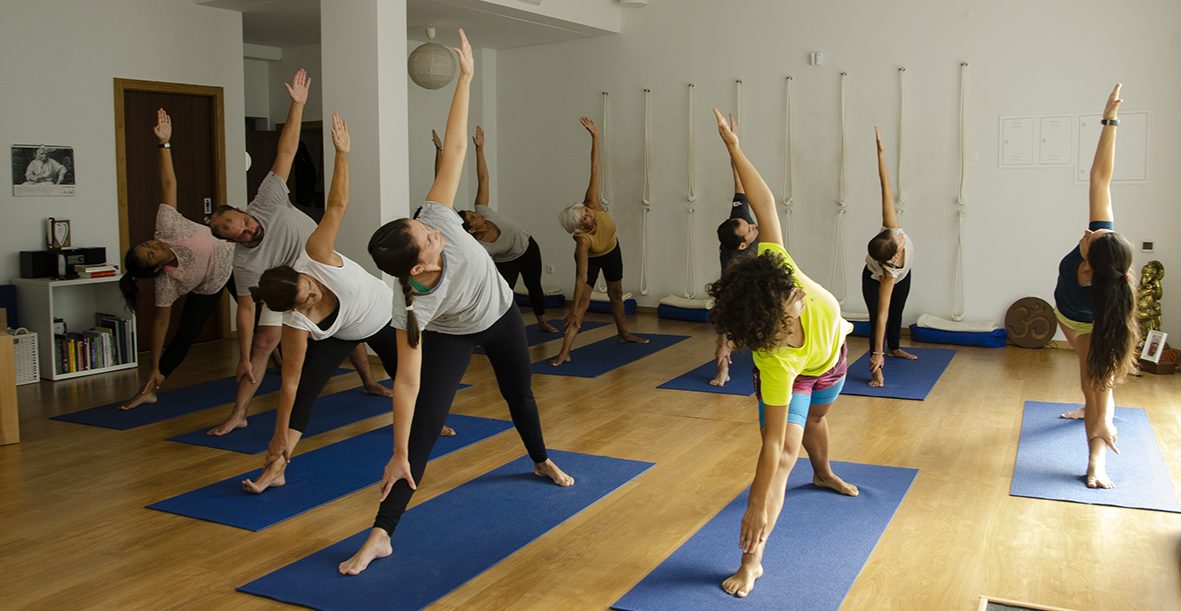
One of the most basic yoga poses for beginners is the standing leg raise. Stand with your legs straight and your feet apart. Reach one hand up to the heavens, looking up at your fingertips. Stand with your arms straight out. This pose will benefit your back, thighs, and hips. It will also tone your legs, strengthen your core, and help you build your core strength. You should practice this posture for about six to eight times before you're able to perform it properly.
The staff pose, which is a seated variant of the mountain pose and helps beginners understand the alignment principles for seated poses. For this asana you will need to activate your leg muscles and lift your chest while relaxing the shoulders. This will allow you to relax your shoulders, which will lead to a gentle bend in your knee. You can also alter the position by placing an object on top your knees.
It's a great way of ending a yoga session. This pose is a great place to begin if you are just starting out. Keep your hips up and your heels pointed towards the ground. You don't need to touch the floor, but it does stretch the outer hips. For a more comfortable experience, bend your knees so your hips remain parallel.

The corpse posture is a great position for transition. It can be difficult to bring your body into a still state, but it becomes easier as you practice. To get the most out of your practice, give yourself plenty of time and dedicate a few minutes each day to reviewing your posture. With regular practice, you'll see physical and mental benefits as your yoga progresses. The benefits of a daily yoga practice are immense.
For beginners, the triangle pose is one that's most common. It strengthens your chest and hamstrings. It also improves your posture. It's an ideal starting point to any beginner's yoga practice. Other than the triangle pose the Seated Spinal Twist pose is also popular with beginners. This stretch stretches the spine and the upper back, while strengthening the legs. It also helps to strengthen the back.
The twist pose is an excellent introduction to yoga twists. The twists are good for lengthening the bottom leg, and counteracting back tension. This pose can be hard for people with back problems. But it will build your spine and strengthen your legs. This is a great exercise to start with. If you aren’t sure where or how to start, take a look at the child’s pose. Once you understand the cat, any position will work.
A good starting pose is the forward bend. This is a general stretch that helps to stretch the hamstrings, calf muscles and hips. You should be focusing on the bridge pose during a yoga class. It will increase your balance and flexibility. It can be challenging if you're not familiar with the basics of yoga. But you will be able to do this pose with the support of a teacher.

A child's posture is a good starting point. It will improve your strength and body alignment. Many of the beginner yoga poses can be combined. So it's essential to start with the foundational ones so you can build your way to more advanced positions. And keep practicing! And remember that these are not the only poses for beginners. You can always modify them to suit your body.
The downward dog is a popular pose for beginners in yoga. The purpose of this posture is to strengthen the back. To make it easier, stretch your thighs. Next, extend your arms out to the sides and then let go. Keep the pose in place for at least thirty seconds. To improve your ability to move, you can also try other versions. Then, practice the poses for beginners until you master them all.
FAQ
Eggs good for men
The egg contains all the nutrients required by the human body. It helps to maintain strong bones and healthy hearts and lungs and stabilize blood pressure.
Eggs are rich in protein, vitamin A, B12 and D,E,K, as well as vitamins A,B12 and D,E,K, calcium, iron, phosphorus, manganese, copper, magnesium, and riboflavin.
The cholesterol content of egg yolks is high. However, the egg yolk is low in cholesterol. Eggs have less saturated fat than many other foods.
They are also low-calorie and high in sodium. They can also be prepared in many different ways. They can be cooked in a variety of ways: poach, saute, bake, hard-boil or fry.
They are incredibly nutritious and easy to prepare.
Aim to eat two whole eggs per week. If you dislike eating eggs, you should add them to your diet.
Eggs are a good source of essential nutrients for our bodies. Include eggs in your daily diet.
Is Cardio Better Than Strength Training?
Both are equally effective. However, cardio is more effective if you're looking to bulk up faster.
Cardio burns a lot more calories per minute that strength training and is more effective at burning fat.
Strength training helps build muscle mass. But it takes longer than cardio to accomplish this goal.
What does butter do?
Butter is one the most nutritious sources of saturated oils. This type fat is great for your skin and hair. It also helps you build stronger bones.
Vitamin K is also found in butter, which helps prevent bleeding from cuts or bruises. Vitamin K works together with vitamin C to prevent bruising.
Butter also contains minerals like calcium, phosphorous and potassium. These elements are good for teeth and bones.
However, butter has some drawbacks. Butter has high cholesterol. A few studies have shown that too much cholesterol can increase the risk of developing coronary disease.
Butter is also high-fat, which can contribute to obesity and increase cholesterol.
However, if you must have butter, try spreading it on bread rather than dipping it into soup or salad. Bread absorbs more oil than potatoes or pasta.
How fast can my body be transformed?
You must change your mindset. First, you must decide to make a change.
Once you decide that you want to change, it is time to set a minimum of 3 months' commitment to your fitness goals.
Next, you will need to find a program that suits your lifestyle.
It is important to have realistic expectations. You shouldn't waste money on a gym membership that doesn't allow you to put in the effort and time required to reach your goals.
Instead, make use of your time outdoors.
Walk around your block for an hour every day to burn calories and help you lose 1 lb per month.
Now that you are clear about what you want to do, plan how you will organise your life around this plan.
This includes scheduling a time to exercise each morning before you leave for work and taking breaks throughout the day so that you can move.
Finally, you should reward yourself when you reach milestones. This could be buying accessories or clothing that reflect your success.
Do I have to do it every day?
No! You should do at least 30 mins of moderate-intensity activity 5 days per week. That could mean walking fast enough for you to get slightly out of breath and biking hard enough for you to sweat.
Can I consume alcohol while working out?
Yes. Alcohol can increase energy expenditure, speed up healing time, and reduce soreness.
It also increases insulin sensitivity. This makes it easier and faster to absorb glucose.
Alcohol can cause dehydration. This can slow down your metabolism. Alcohol can also lower testosterone production, which could lead to a decrease in muscle-building potential.
Women shouldn't consume alcohol before exercising. Women who drink heavily should wait at the least 24 hours before exercising.
Nursing mothers should abstain from alcohol as much as they can.
Men should limit their alcohol intake to just one drink each day.
Statistics
- The PRS enabled risk stratification for overall prostate cancer and lethal disease with a four-fold difference between men in the highest and lowest quartiles (HR, 4.32; 95% confidence interval [CI], 3.16-5.89). (pubmed.ncbi.nlm.nih.gov)
- According to the American Heart Association, blood pressure should be checked at least once every two years, beginning at age 20. (my.clevelandclinic.org)
- 10 pounds in a month is likely during a lean bulking phase, especially for beginners. (muscleandstrength.com)
- Candidates and applicants must pass all four tests at 70% (minimum level) to graduate from Basic Deputy U.S. Marshal (BDUSM) Training. (usmarshals.gov)
- According to the American Academy of Dermatology (AAD), men over 50 are at a heightened risk of developing it. (healthline.com)
External Links
How To
What nutrients does a person need every day?
Men need healthy growth and development. The body needs vitamins, minerals as well as proteins, carbohydrates and fats.
Specific nutrients are also required by the male body at different times during the day. To give you an example, the body uses energy it receives from food to make hormones and antibodies. When you wake up, your body uses protein to repair damaged tissue and build muscles.
Your body burns fat at night and stores it as energy as glycogen. Your body requires fewer calories, but still needs enough nutrients. If you feel hungry, you may consider having a snack during the evening.
For your body to function properly, it needs adequate amounts of protein and carbs. You may feel sore muscles if you exercise hard.
To avoid this, you need to eat carbs and proteins within two hours of training. To get energy from glucose, your body will start to degrade stored glycogen.
In addition, you must consume protein immediately after completing your workouts. This prevents muscle tissue loss that happens while you sleep.
During periods of intense physical activity, your body produces lactic acid. It builds up in your bloodstream, which can lead to fatigue. Avoid this by eating foods rich in carbohydrates such as fruits or vegetables.
Carbohydrates can give your body the energy it requires to recover from intense exercise.
Additionally, lean meats, fish and eggs, dairy products, yogurt, cream, cheese, yogurt and beans can be added to your diet.
All of these foods have high-quality protein. Protein promotes muscle growth, and helps repair damaged tissues. It also provides the amino acids your body needs to produce sex hormones and testosterone.
To maintain healthy skin, hair, and joints, you also need sufficient dietary fats. Healthy men need between 20% and 35% of their total caloric intake from fat.
Fat protects your heart from cancer and keeps it strong. It helps keep your brain working properly.
You can get most of the fat you need from vegetable oils like olive oil, sunflower oil, corn oil, soybean oil, peanut oil, and safflower oil.
These oils have high amounts of monounsaturated oil fatty acids, (MUFAs). MUFAs lower cholesterol and decrease inflammation. They protect your cells from damage by free radicals.
Saturated Fats (SFAs), which are mostly found in animal products like meat, butter, and dairy products, include LDL ("bad") cholesterol. SFAs can increase LDL ("bad") cholesterol as well as triglycerides. They can also increase weight and reduce belly fat.
Plant-based fats such as vegetable oils, seeds, nuts and grains contain polyunsaturated (PUFAs). PUFAs reduce inflammation and improve cardiovascular function. They can also control blood sugar levels and cholesterol.
Men with low HDL ("good") cholesterol often suffer from erectile dysfunction. The consumption of saturated fats raises bad cholesterol which in turn lowers good cholesterol.
Red meat and pork are a common source of prostate problems in men who eat a lot. Nitrites convert to nitrosamines when cooked at high temperatures. These compounds can cause cancer.
Most processed meats contain nitrites and other harmful chemicals. These chemicals should be avoided.
The American Heart Association recommends that you limit your intake of red meat to 2 per week. Instead, choose poultry or fish, beans, tofu and whole grain bread.